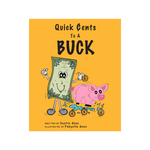You have no items in your shopping cart.
Inflation refers to the general increase in the prices of goods and services in an economy over a period of time. It means that, on average, things become more expensive, and each unit of currency buys fewer goods or services. Inflation is often expressed as an annual percentage, indicating how much the overall price level has risen, compared to a previous period.
Several factors can contribute to inflation:
- 1. Demand-Pull Inflation: This occurs when aggregate demand in an economy exceeds its aggregate supply. When consumers have more money to spend and businesses struggle to keep up with the increased demand, prices rise.
- 2. Cost-Push Inflation: This happens when the cost of production for goods and services increases, leading businesses to raise prices to maintain their profit margins. Factors like rising wages, increased raw material costs, or supply chain disruptions can contribute to cost-push inflation.
- 3. Built-In Inflation: Also known as wage-price inflation, this occurs when workers demand higher wages to keep up with the rising cost of living. If businesses grant these wage increases, they may raise prices to cover the higher labor costs, creating a cycle of rising wages and prices.
- 4. Monetary Policy: Central banks have the power to influence inflation through their monetary policy decisions. By increasing the money supply through actions like lowering interest rates or purchasing government securities, central banks can stimulate demand in the economy, which might lead to inflation. Conversely, reducing the money supply can help combat inflation.
- 5. Supply Shocks: Sudden disruptions in the supply of goods or services can lead to supply shocks, causing prices to rise. For example, geopolitical events, natural disasters, or significant changes in production capacity can impact supply and contribute to inflation.
Moderate inflation is generally considered normal in most economies, as it encourages spending and investment. However, high or hyperinflation (extremely rapid and out-of-control price increases) can be harmful, as it erodes purchasing power, disrupts economic stability, and makes long-term planning difficult.
Central banks and governments often monitor and manage inflation to maintain price stability and support economic growth. They use tools like interest rate adjustments, open market operations, and fiscal policies to influence inflation levels.








